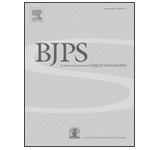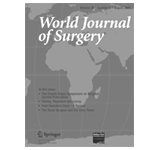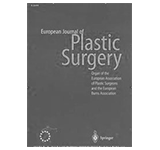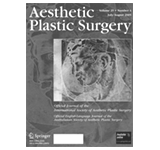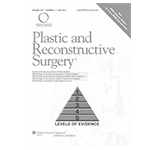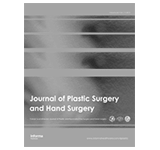This service is about reversing possible deformities that have arisen from a previous breast surgery. The following complications are rare, their causes are still unknown and can always be reversed with the contribution of an experienced plastic surgeon.
-
Capsular contraction
Capsular contraction is a rare event which sometimes occurs following breast augmentation, with little evidence to decisively indicate exact causation. The predisposition and pathogenesis suggest that after placing the silicone implant in the breasts, the body reacts to the foreign material resulting in the formation of a contraction surrounding the implant. When this contraction begins to become scarred, fibrils, fibroblasts and fibromyoblasts are formed in it– causing hardness, often palpable and sometimes pain.
The position of the incision through which the silicone is inserted or the location of the pocket where the implant is placed may increase the likelihood of bleeding during surgery, subclinical inflammation, and biofilm formation. It is important to emphasize that there is no absolute certainty as to why this condition develops. There are four stages – Grades of capsular contraction.

Stage A: The patient feels nothing. Only the doctor detects hardness in the breast through palpation.
Stage B: The patient feels her breast becoming hard.
Stage C: The breast becomes stiff and its shape begins to change.
Stage D: All of the above, with the presence of breast pain.
Treatment
Treatment is surgical. 20-30 years ago, plastic surgeons would often attempt to rupture the contraction, forcefully compressing the breast until the contraction would burst. Our methods have since evolved and more scientifically and medically advanced methods are used today – we mention it here only to condemn it.
Example
The patient had breast augmentation 5 years ago. It was noticed that her left chest had begun to change its shape, while it felt very stiff. The patient had the silicone implants inserted under the mammary gland.

Surgical Procedure
1) Use of previous incision.
2) Remove the silicone implants.
3) Create a new pocket for the silicone implant under the pectoralis major muscle. (There are many indications that the contraction decreases significantly if it is placed under the muscle).
4) Use of rough surface implants, which often do not cause the development of capsular contraction.
5) Closure with the stitches of the previous pocket.
6) Skin closure.
7) Full breast correction.
The capsular contraction may be limited:
- Placing the silicone implant either under the muscle, or with the subfascial, or double level techniques
- Rough surface implants
- Incision under the breast
- With bloodless operations (Non-touch – No pain). Without bindings, tight bras or chest massage after surgery.






-
Implants in high position
In this case, the silicone implant has been pulled upwards. The implants placed under the muscle rarely go higher than the desired height.

Surgical Procedure
1) Designing the correct position of the silicone implant
2) Use previous incision
3) Implant removal (no need to replace the implant)
4) Create a lower pocket, if necessary
5) Insert new implants
6) Closure
7) Full breast correction





-
Tuberous Breast
The tuberous breast is a congenital abnormality of the breast shape. There are various assumptions about the causes of the tuberous breast, with plastic surgeons generally unresolved on their genesis. Read more about the tuberous breast.

Example
The patient had a tuberous breast that was not recognized, while she was submitted in breast augmentation. This has led to double-bubble deformity, a large nipple and an additional issue with the pocket.



This is one of the most difficult and complex breast issues.
Surgical Procedure
1) Incision around the nipple areola – Ratchet section
2) Replacement of the silicone implants
3) Replacement of the pocket from under the breast to M.U.S.T.
4) Release entire breast
5) Vertical and horizontal lines for the development of the lower breast as it is a tuberous breast

6) Placement of new silicone implant
7) Lift up and correction of nipple using a special purse string
8) Right breast correction on the surgical table
9) Repeat the same procedure on the left breast
10) Correction of both breasts
11) First post-operative day. Use of red-orange Betadine.
12) Post-operative result after 6 months.


13) Post-operative result after 8 months.


14)Results




- Double-bubble Deformity
Double-bubble deformity is a rare complication following breast augmentation. In such cases, the breasts of the patient are presented with two parallel, transverse and curved folds along the lower breast section formed by the breast and the silicone implant. While the precise cause of this phenomenon is still under investigation, it is believed to be due to the movement of the padding downwards, a scarring capsule, a fall of the breast, and other factors. The deformity is most visible on tubular breasts, on small breasts where large implants are being inserted, breasts whose distance from the nipple to the sub-mammary fold is small, and on breasts with a large sub-mammary fold. This complication can be corrected in several ways. The most common of these is capsulorraphy, where the silicone implant can be properly placed in the breast.
Example
A 35-year-old patient with a double-bubble deformity on the left breast after breast augmentation.

Surgical Procedure
1) Design of the new position of the implant in the operating room.
2) Use previous incision.
3) Removal of implant.
4) Stitching the capsule with permanent inner sutures and limiting the space that was formed.
5) Complete correction of the breasts.
Another way to correct double-bubble deformity is to create a new pocket between the pectoralis major muscle and the anterior capsule. A stitch is then used to the previous pocket and we place the implant on its new pocket.
3 months later.


Book your appointment with the distinguished and award-winning plastic surgeons of Kosmesis and learn how to get a perfect and harmonious breast result!






















